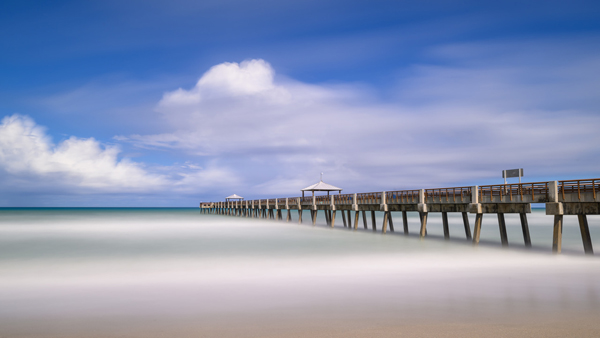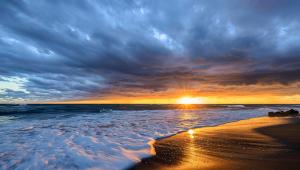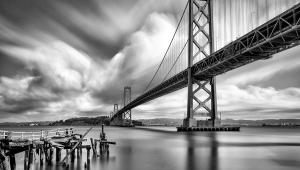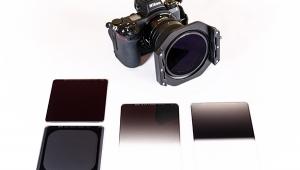The Biggest Mistake Many Photographers Make & How to Avoid It

(Editor’s Note: You can read ”On the Road” columnist Deborah Sandidge’s other columns here).
The photography essayist, critic, and historian A.D. Coleman once said that the biggest mistake photographers make was “thinking that what they’re experiencing is what they’re capturing in the photograph.”
Give that a moment to sink in. I did, and I realized that a key to not making that mistake comes down to refusing to settle for simply recording what’s there. Photography beyond the ordinary communicates—or at least suggests—what you were feeling; it’s photography that shows the viewer what moved you and fascinated you, on an emotional level, about the scene or subject.
I realized also that it’s what I do. If I’m viewing, say, the Eiffel Tower, I will not be satisfied with a picture that simply shows that someone with a camera was there. I am driven to make a picture that shows I was there.
Connecting the emotion of the moment to the image is the essence of not making the mistake A.D. Coleman pointed out. Taking the time to think things through helps. So does the incredible camera technology at your fingertips. So does your experience—what you’ve learned along the way. But ultimately the most important factor is your confidence that what you’re seeing and feeling is worth communicating. Think, Why am I going to take a photo here, of this place, at this time? What is it saying to me, evoking in me? Why am I interested, and what do I want to communicate?
Here's how thinking about all of that works for me.
Summer Breeze

I have a friend who’s a painter, and what I was seeing that summer day at Juno Beach Pier in Florida reminded me of his style in depicting scenes of peace and solitude. That was my emotional reaction, and I expressed it with a 215-second exposure that smoothed the water until it resembled the pristine sand of an undiscovered beach and turned the summer clouds into brush strokes across the sky. Both effects were in contrast to a structure made by people, but thankfully, at that time, there was no one in sight; just this perfect place, waiting.
Wish You Were Here

The emotion here, in Cassis, a small fishing village in France, at the blue hour, was how fortunate I was to be seeing what the people across the water—on the streets, in the shops and restaurants, aboard the boats—could not see; they had no idea of the beauty and charm of the scene. The stage was set—blue hour, lights, reflections—and the result was all about what I could do with it in a 30-second exposure at f/16, to not merely record this little bit of paradise, but intensify it to match its effect on me.
Changes

I saw implied menace in the storm clouds coming in over Naples Pier at the Gulf of Mexico, and my thought as they approached was that the moment was temporary and unpredictable, so I’d best be quick. My 15-second exposure caught the clouds as they formed up, and the 24-70mm lens served to both isolate and include. The postscript to this photo is that sadly, the pier was heavily damaged by Hurricane Ian.
Stay Where You Are

What I was experiencing from this vantage point above this part of the River Walk in San Antonio, Texas, was energy—predominantly in the flow of the river taxis, but also from the comings and goings of tourists and locals to what’s billed as the state’s major attraction. No literal image would capture that feeling, so I took four individual four-second shots from which I layered the water taxi sections in post to create the “brush strokes of color” effect.
It would be easy for me to tell you that you can get these kinds of emotionally-driven images just by bringing, and relying on, your camera lens and tripod, but while technology and imaging capability are essential to the process, that’s nowhere near the whole story. You need imagination, creativity, and confidence in your own ideas. You also need to know—and you will discover—that a lot of this is just plain having fun, and to prove that, here's one last example of capturing what you’re feeling.
Goin’ Back
I’m such a child when it comes to Fall because I live in Florida and this is not what we see. I made this slow-motion video in Twin Rivers, CO, in the perfect light of mid-morning with a clear blue-sky background, lying down, looking up and letting it happen through the accentuating eye of my 8-14mm fisheye lens. Later, in post, I looped the original footage several times to make the childlike appreciation I’d experienced last a little longer.
I’m such a child when it comes to Fall because I live in Florida and this is not what we see. I made this slow-motion video in Twin Rivers, Colorado, in the perfect light of mid-morning with a clear blue-sky background, lying down, looking up and letting it happen through the accentuating eye of my 8-14mm fisheye lens. Later, in post, I looped the original footage several times to make the childlike appreciation I’d experienced last a little longer.
















































